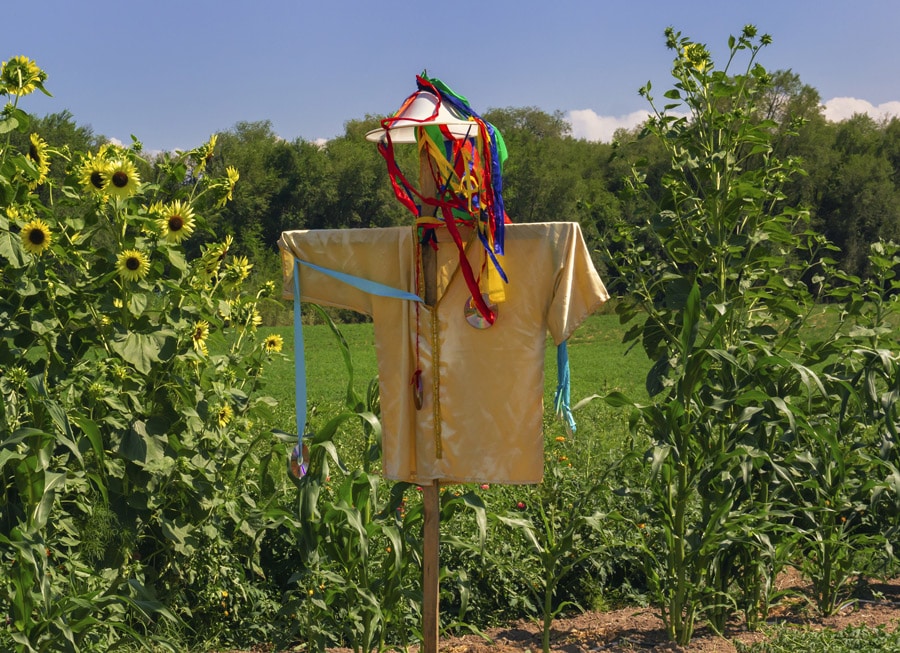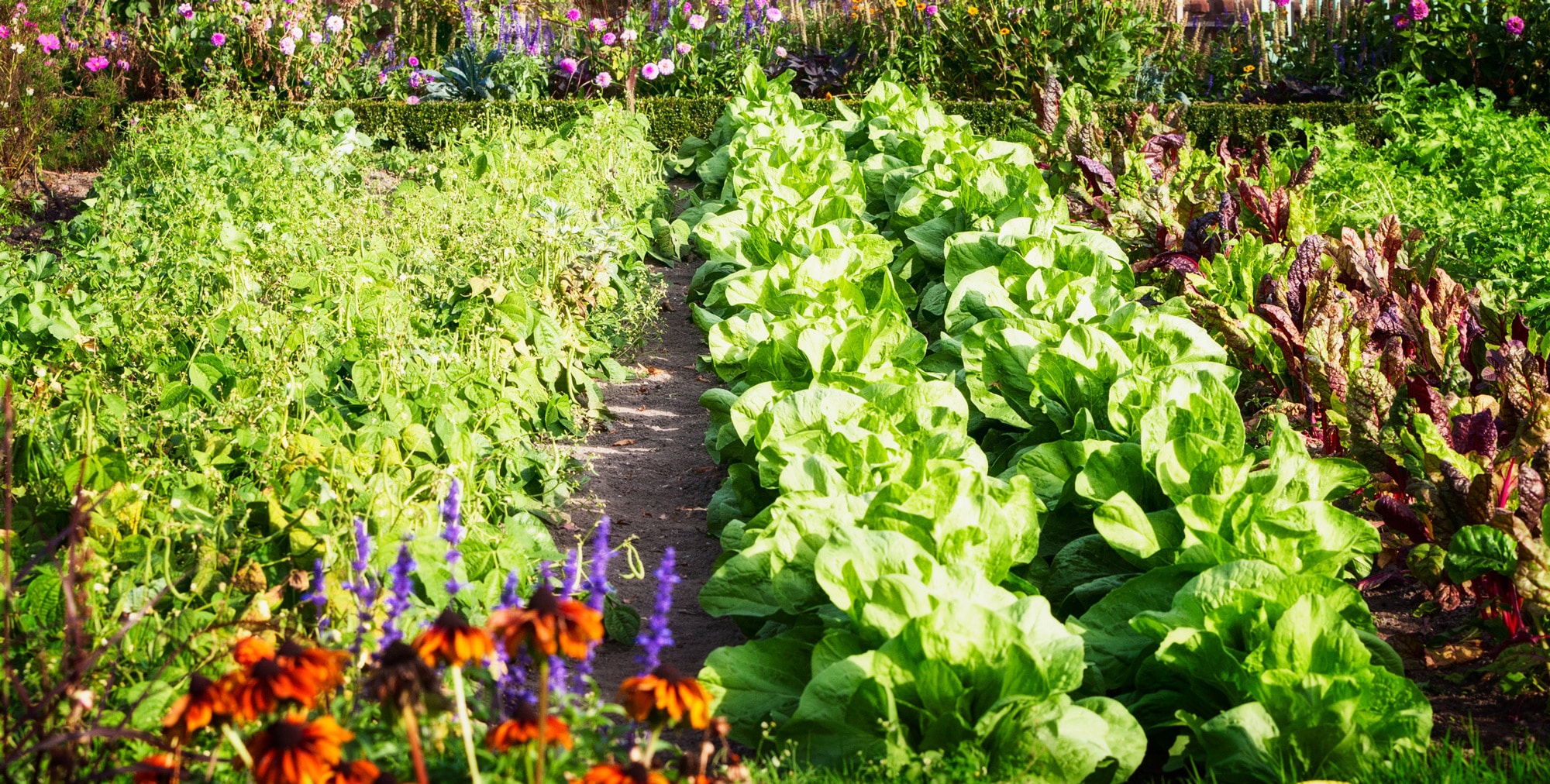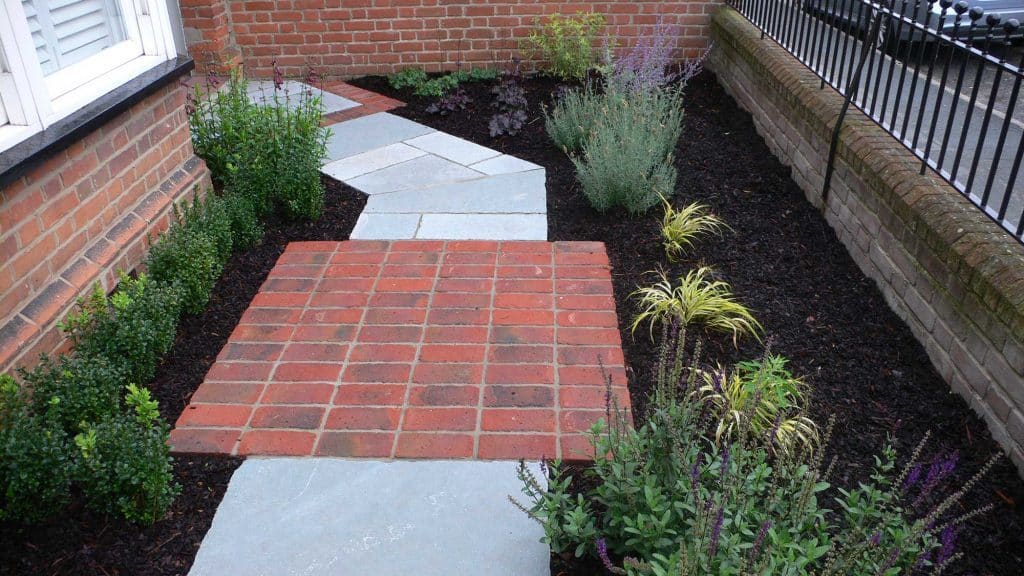11 Feb How to Style your Vegetable Garden
Don’t be fooled into thinking that a vegetable garden is purely practical. It can be beautiful too. Here are our tips on how to style your vegetable garden.
Who says that a kitchen garden needs to be boring. You really can style your vegetable garden so that as well as being productive, it’s a great place to unwind….or even entertain.
Think of your kitchen garden in the same way as you might think of your kitchen. At it’s very core it’s a place for making meals. Which means that it’s potentially an important part of your life. When you are preparing food in an ugly place, the “work” becomes a chore. Surrounding yourself with style turns food production into a joy. So plan your kitchen garden with the same care that you designed your kitchen.
- Plan your layout carefully
- Plot the journey around your vegetable garden
- Design attractive paths and growing areas
- Understand what your plants need
- Place permanent plants carefully
- Make sure you are fully equipped
- Use companion plants for extra colour
- Accessorise to reflect your personality
Planning a stylish vegetable garden
What’s your garden style? Do you like to spaces to be structured with areas mapped out logically? Are you happiest to be surrounded by organised chaos? These are the kind of questions a garden designer will ask before starting to plan any garden. Straight lines or curves? Subtle hues or dramatic colours? Low maintenance or a place to potter?
My personal favourite way to organise a productive garden is to have clearly defined growing beds, carefully laid out so that it’s easy to manoeuvre a wheelbarrow between them. If there’s enough budget (and space) I recommend a greenhouse or polytunnel. They’re great focal points and also extend the growing season. (I use mine to “hide” from bickering children on wet days)
You might want to consider creating raised beds or using metal edging to define the growing areas and paths.
Most important of all in the veg patch is water….do you have a tap, a hose pipe or a water butt within easy reach of your growing crops? Does your busy lifestyle mean that an automated irrigation system is a must? Without water, your vegetable plants will fail!
Plot the journey around your veg patch
If you are new to growing your own food, you’ll learn quickly how important it is to have a clear journey around your veg patch.
It’s useful to be able to push a wheelbarrow around easily and for that, your paths need to be 1 – 1.2 metres wide (3-4ft).
You’ll need a utility area to store your tools. I’d recommend having some kind of composting system too. If you’ll be adding kitchen peelings to your compost bin – an all-weather path will be invaluable.
And don’t forget to fit in a little seating area where you can enjoy a cuppa as you admire your work.
For ease of maintenance, aim to make your growing beds no more than 1.2 metres wide – that way you can reach into the centre of them without treading on the soil. There’s no need to stick with square or rectangular growing beds. They are simpler to build but if you want circles, triangles or random shapes go for it – the plants won’t mind!
Design attractive paths and growing areas
Once you have settled on a layout plan for your allotment plot, it’s time to style your vegetable garden with attractive paths and growing areas.
Which materials will you use? A grass path looks great but it will need mowing and edging. It may also get muddy in wet weather. Soil stablilisation grids – the ones used for overflow car parks can help avoid this. They’re great for gravel paths too.
Stone paths allow all year round access and are easily swept if soil or garden debris gets on to them. A combination of stone slabs with gravel or grass looks amazing. Or how about traditional brick paving? It’s stylish and practical.
Decorative features make paths far more interesting and stylish. In this front garden in Colchester, we combined limestone pavers with red brick.
You could make your garden even greener by using reclaimed landscaping materials.
Permanent planting
Permaculture is all about growing perennial plants that keep cropping year after year. Most vegetable gardens have an element of permaculture. For example, you might want to plant fruit trees, strawberry plants, currant bushes or raspberry canes.
Think very carefully about where you’ll position them. Consider their eventual size, whether they will cast shade or take up a lot of space with their roots. Think too about the aesthetics – in gardens, style and symmetry go hand in hand. So how will you balance the overall look of the garden? It helps to have a garden design plan drawn – ideally in 3D. That way you style your vegetable garden before you start planting.
Companion planting for colour and pest control
Companion planting is an ancient art that was commonly used before chemical pest controls became available. Not only is it incredibly pretty to look at, it cuts costs (you won’t need to buy sprays) and allows you to grow organic vegetables.
Most of the herbs and flowers used in companion planting are edible – so you can enjoy them in your cooking. As a rule of thumb, if you would normally cook two plants together, they make great companion plants in the garden. Tomatoes and basil for example.
Great companion plants
- Mint – grow it in a pot near kale and cabbage to deter flea beetles
- Garlic Chives – tasty little herbs whose scent keeps carrot fly away from your crops
- Calendula – helps protect tomato plants and bean plants from aphids and whitefly
- Nasturtiums – lure butterflies away from cabbage plants
- Sage – yummy herb which attracts pollinators and helps keep brassica pests at bay
Accessorise your vegetable garden

Fencing – A pretty picket fence will stop your dog from digging up or eating your crops. (My dog ate all of the strawberries last year!
Victorian style cloches – protect tender crops from frost
Plants for pollinators – increase the chances of getting a bumper crop by encouraging bees to your garden
Home-made scarecrow – bring a bit of character into your plot
Get creative with plant labels – paint pebbles, write on wooden spoons, recycle stuff – anything but boring plastic tags!
Flags, bunting, windmills – a fun way to discourage hungry birds from scoffing your seeds
Wildlife pond – it doesn’t need to be huge, but if you can encourage frogs and toads into your veg patch you’ll have home-grown slug control for free.
Table and chairs – it has to be done!
How will you style your vegetable garden?
We’d love to see your ideas for personalising your plot. And if you need any help planning its layout, deciding on materials, or finding a reputable landscaper to help prepare your veggie garden, please do get in touch. Investing in a garden design really can enhance your grow your own experience.
Contact Tapestry Design Studios
Related Articles
Ideas for homeschooling in your garden
How your garden can help improve your mental health
Frequently asked garden design questions







Sorry, the comment form is closed at this time.